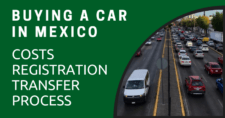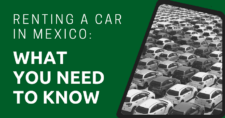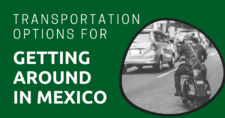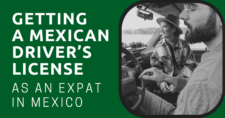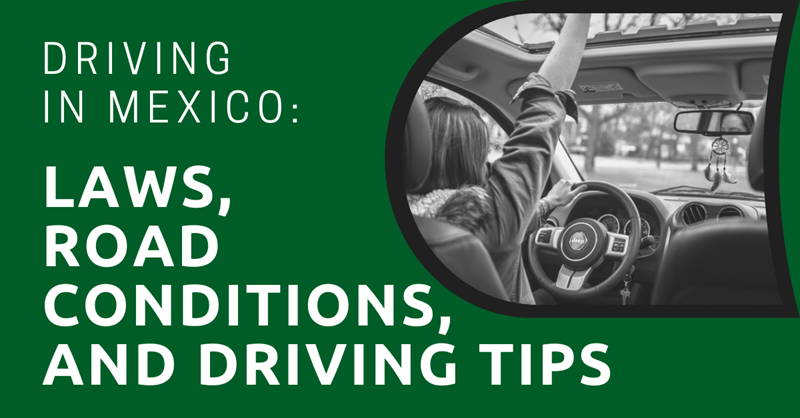
Those who have been to Mexico and have lived there long enough to experience driving in the country will know that the situation on roads can be pretty intense, especially for first-time drivers.
Even as a passenger, you will notice how intense drivers in Mexico can be.
Having said that, driving is a good way to travel around the country and is the fastest way to reach different places.
It is also a fantastic way to discover the country and see the vast differences in landscapes across states and regions. This is something you won’t experience when you’re flying or taking other modes of public transportation.
If you are planning to drive in Mexico or are thinking about doing so, you’re in luck. I’ve driven across various states in the country, and I will tell you everything you need to know about driving there.
This article will take approximately 23 minutes to read. Don't have the time right now? No worries. You can email the ad-free version of the article to yourself and read it later!
Disclaimer: This article may include links to products or services offered by ExpatDen’s partners, which give us commissions when you click on them. Although this may influence how they appear in the text, we only recommend solutions that we would use in your situation. Read more in our Advertising Disclosure.
Contents
- What Type of Driver’s License Can You Use in Mexico?
- Is It Safe to Drive in Mexico?
- Tips for Driving Safely
- Road Conditions
- Important Driving Laws
- Type of Roads
- Mexican Driving Culture
- Military Checkpoints and Police
- What Do You Do if You Get Into an Accident or Encounter a Problem with Your Vehicle?
- Parking Your Car
- Additional Tips When Driving in Mexico
- FAQs
- Driving a Car with a U.S. Plate in Mexico
- Now, on to You
What Type of Driver’s License Can You Use in Mexico?
If you’re driving a rental car in Mexico, your driver’s license that was issued in an English-speaking country will do.
Otherwise, if your license is from a non-English-speaking country, you will need to obtain an international driving permit containing an English translation of the information stated in the license.
If you’re driving in Mexico as a tourist, you will need to have the following documents with you at all times:
- Your Official Entry Immigration Form (FMM), which states how long you are allowed to stay in Mexico; this could be a piece of paper or a stamp on your passport
- An ID such as a passport
- The vehicle’s insurance
- Proof of vehicle registration with information on license plates
The last two should always be in the glove compartment of the car, so make sure to check before leaving the car rental company.
If you want to purchase a car in Mexico, or wish to drive one as a temporary or permanent resident residing in the country for half a year or longer, you need a Mexican driver’s license.
Related article: Getting a Mexican Driver’s License as an Expat in Mexico
Is It Safe to Drive in Mexico?
You might think that driving in Mexico isn’t as safe as in other countries, particularly those where traffic laws are strictly obeyed. But as in many roads everywhere in the world, as long as you follow traffic rules and drive safely, you’ll be fine. Also note that the level of road safety depends on where you drive.
Your experiences driving in busy cities like Mexico City or Monterrey will be different from driving on interstate highways or dusty roads in small, far-off villages. So make sure to follow tips for driving safely.
Tips for Driving Safely
One of the most important tips to follow when driving in Mexico is to drive during daylight. Avoid driving at night whenever you can, especially on highways and in rural areas. And make sure to fill up the gas tank whenever possible, as you may find yourself on a long road with no gas station.
It is also a wise to have enough cash on you to pay for toll fees, and always make sure you have a charger in the car where you can plug and charge your phone.
The safety of roads in Mexico varies from state to state and from region to region. For example, driving in the Yucatan or Baja California is fairly safe, whereas if you’re driving in Monterrey, Oaxaca, and in most areas in Chiapas, you need to be extra careful. In these areas, you will often find roadblocks or you might drive in certain parts of towns where children hold up a rope to hold drivers up to ask for money before they let you pass.
It pays to ask people who have recently travelled in the area where you are about to go, specifically the road conditions and other useful facts. You can find such information on Facebook groups or forums.
Road Conditions
When driving in Mexico, you will notice the different types of road conditions: dirt roads, well-maintained roads, roads full of potholes, streets with plenty of speed bumps, etc.
The condition of a road varies immensely from place to place, which is one of the reasons why it’s recommended to drive during the day, whenever possible. This way, you have a good view of the road, as there are a lot of pitch-black roads in many areas.
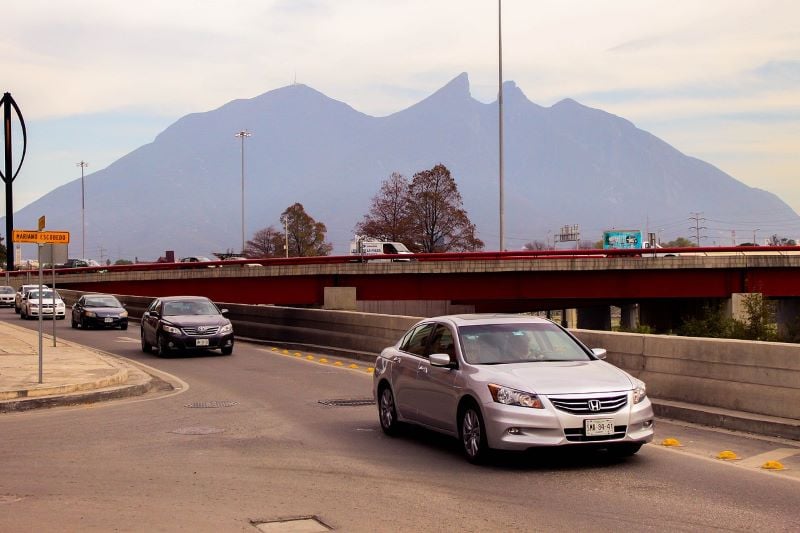
There are also some roads that you should avoid, such as the Toluca Highway which is filled with dangerous curves and inclines. This road is infamous for being the site of numerous accidents involving big trailers with malfunctioning brakes and smashed into rows of cars waiting at toll road houses.
Another one to avoid is the Carretera Nacional 134 in Guerrero, which is nicknamed Highway of Death (Carretera de la Muerte). Bandits abound on this road.
Besides road conditions, you must also pay attention to driving laws whenever you’re behind the wheel.
Important Driving Laws
It goes without saying, it’s crucial that you follow driving laws when driving in Mexico. In particular, you should pay attention to laws pertaining to the ways in which people are required drive, as well as those concerning lane marking, speed limit, stop signs, and other road signs.
There are also certain laws that are merely implied, such as regarding the use of hazard lights. Drivers in Mexico tend to use them religiously every time they are about to stop, and it is often used in busy areas, such as Mexico City.
The purpose of using hazard lights is to signal to those driving behind you that you are about to stop. The reason drivers use hazard lights for this purpose is to make sure that they catch other drivers’ attention and for the others drivers to then proceed with care once they see said lights.
Following these rules will help you avoid accidents. In case you do get into an accident, you can call 911.
Vehicle Right of Way
People drive on the right side of the road in Mexico. This might be confusing when you come from a country where people drive on the left side of the road.
Lane Marking
You will notice that lane marking is often missing on roads. You can imagine how confusing this can be, especially when you’re unfamiliar with the road. Actually, even when there is a lane marking, many drivers in Mexico tend to ignore them.
To make things worse, your map may not always indicate all the streets, which could make you get lost. Keep in mind that there are many one-way streets in cities and towns, so always keep an eye on the signs to make sure that you are following the law.
Speed Limit
Speed limits definitely exist in Mexico, though it may not seem like it, especially when you drive around in areas such as Mexico City. Speed limits on Mexican roads are stated on signs in kilometers per hour (KM/h), so if you are used to the U.S. standard (miles per hour), remember that things are different here.
Within city boundaries, speed limits usually range between 20 and 60 KM/h. On highways that go through or surround a city, speed limits range between 80 and 90 KM/h. On interstate (toll and free) highways, the speed limit is usually 110 KM/h.
When you are caught speeding, you will have to pay the ticket on the spot. The amount of fine depends on how much you were speeding and in which state or area of the state you are in.
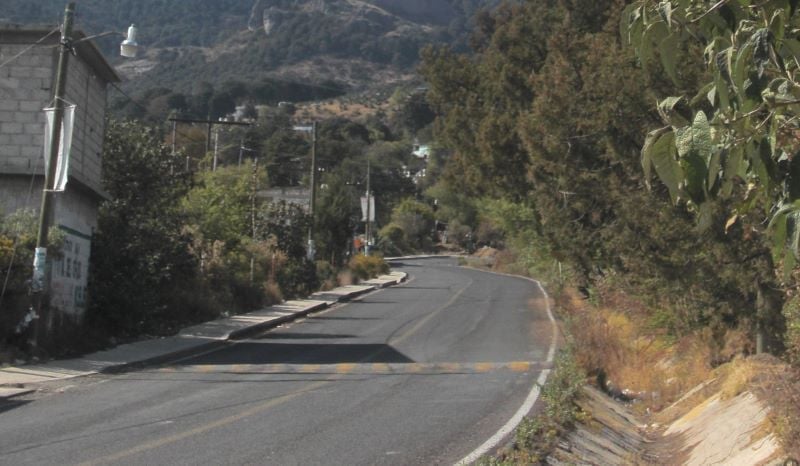
Usually, the minimum is 500 pesos. If you do not have enough money with you, the officer may accept less or take you to the nearest ATM so you can withdraw money to pay the right amount.
Worst-case scenario: an officer may confiscate your driver’s license. If this happens, you will have to go find it at the police station and you can only get it back after paying a fine.
If an officer has a good day and the speeding was not greatly above the speed limit, he might just let you go with a warning. Therefore, it is always best to be polite.
Stop Signs
Stop signs are a common sight on roads in Mexico. You will find them everywhere, and this might sound strange, but you really have to stop whenever you see one. It is also a way to warn you that you might be entering a one-way street.
Underneath the stop sign is another sign with an arrow, which indicates direction. This is pretty straightforward: if the arrow points to the right, you go right. If it points to the left, you go left. If there are no arrows, you can go either way.
Make sure to know the meaning of the following signs when driving in Mexico.
- Entrada – entrance
- Salida – exit
- Alto – stop
- Restringido – restricted area — do not enter; enter only under certain circumstances
- Prohibido – entry prohibited — do not enter
- Retorno – turn-around, where you can take a proper U-turn
You will find these signs on practically every road in Mexico.
Type of Roads
There are different types of roads in Mexico, from dusty, sandy roads to brand new highways. Some are in terrible condition, while others are well-maintained.
Toll roads tend to be in excellent condition, while free roads (those found outside the cities) aren’t. Here’s how these types of roads differ.
Free Roads
Note that you can travel anywhere in Mexico without having to pay for road (i.e., toll) fees. But this entails longer routes, which means it will take you longer to get to your destination compared to when you take a toll road.
When you drive on free roads, such as when traversing towns and villages, you’ll encounter traffic lights, pedestrians, and speed bumps. When driving on a highway, you’ll find signs indicating your options: ‘libre’ (free) road or the ‘cuota’ (toll).
Toll Roads
If you are in a hurry or simply prefer to drive on well-maintained roads, it’s ideal to choose a quota road when there’s an option to take one to go to your destination. You’ll be paying for the use of this road, but it is usually well worth it. In some parts of the country, you can use a toll tag in your vehicle to make it convenient to pay toll fees.
You can purchase a toll tag online or from a store, put it on your dashboard, and whenever you drive, make sure to pass by the lane that accepts toll tag payments. Toll roads can be found around Mexico City and across the States of Mexico, Hidalgo, Morelos, Guerrero, Puebla, and Querétaro.
Note, however, that not all toll roads have lanes that accept toll tag payment. In case you find yourself driving in such roads, the only option is to pay cash, so make sure you have enough cash handy. There are no ATM machines at toll booths, and if you can’t pay the fee, they will not allow you to pass.
Also, toll gates only accept Mexican pesos. I have seen drivers stranded, flagging other cards asking to change their US dollars into pesos so they could pass through certain roads.
Toll fees cost anywhere between 25 and 500 pesos.
Mexican Driving Culture
The driving culture in Mexico is diverse. To illustrate, many drivers in Central Mexico tend to be aggressive while drivers in Yucatan tend to be passive and polite.
In any case, you have to be prepared for anything when driving.
Always check the mirrors and expect the drivers you encounter on the road to be unpredictable — you never know what they are up to.
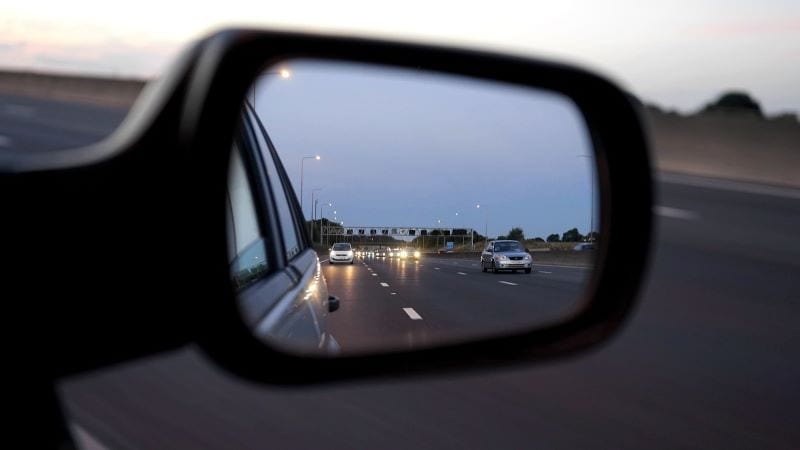
Some drivers might make suddenly turn or brake and some drivers hardly ever use blinkers.
Also, don’t be surprised when someone comes out of nowhere and wipes your car window clean or do a little show while you are waiting at a traffic stop. These are just people trying to make a quick buck in the country’s informal economy, and these are rather common occurrences on many roads.
Do It the Mexican Way
Despite the driving laws in Mexico, there are still plenty of law breakers and bad drivers, which is why you must keep your eyes on the road at all times.
Drivers generally have little patience when they find themselves trailing behind someone who drives slowly, even though the person is merely obeying speed limits. In such scenarios, these impatient drivers may want to drive past the ‘slow driver’ and swerve on either the left or right lane.
In fact, there is a federal law stating that drivers must keep right on federal highways. But as you might soon notice, many drivers do not abide by this particular law.
If you’re driving on a single-lane highway, it isn’t uncommon to find yourself behind a slow-moving vehicle. A courteous driver would use their left blinker to signal that you can safely overtake them.
In any case, it’s best to use your common sense and to always proceed with caution.
Filling up the Gas Tank
You may find it unusual that in Mexico, you do not have to pump your own gas; an attendant will do it for you. Usually this person will also clean your windows as the tank fills up. It is common practice to tip the attendant (around 10 Mexican pesos will suffice).
Make sure you tell them how you’d like to pay before they start filling your car, as some gas stations only accept cash because their credit card terminal isn’t working at the moment. If you want to pay cash, you say ‘efectivo’. If you want to pay using a card, you say ‘tarjeta’.
The attendant might ask you how you want your tank to be filled, in which case, you can say ‘lleno’ which means full. Alternatively, you can specify an amount of money for gas or say how many liters of gas you’d like.
It is also important to say what type of gas you’d like. The green (verde) one is the cheapest option, while the red (rojo) one is the most expensive. By law, the attendant should tell you that the pump is on zero before they start pumping. This way, you’re assured that you get what you pay for.
Navigation
Google Maps works well in Mexico and will certainly come in handy in getting directions. Using the app, you can download the route going to any area that you’re headed. Note that f you don’t have internet on your mobile device, you won’t get live information about traffic flow. However, you will still get the correct route to your destination.
You can also use a roadmap and a working compass to help you navigate if online apps are not an option. If you prefer to navigate this way, you may have to talk to locals at certain points. This is why it pays to learn a couple of useful Spanish phrases. It also helps to have an English-Spanish dictionary with you.
Lastly, when navigating, always be prepared for surprises — you could get lost or your car might break down. In these scenarios, food and water will be your friend. Also, it helps to check if there are gas stations where you’ll be driving.
Military Checkpoints and Police
Near interstate borders, on major highways, and outside of big cities, it is likely that you will encounter military checkpoints and that you will be stopped. In these cases, you will be asked to pull over either to answer some questions or to show some documents. Here’s how to deal with these checkpoints and what to do when you get a fine.
Dealing with Checkpoints
On military checkpoints, you may be asked to show your driver’s license and/or insurance policy (i.e., whether or not you have one). There are also times when you will be allowed to pass through without being interrogated.
If you are driving a U.S.-registered car, you might get stopped more often. Make sure to be polite to the police or military officer, follow their directions, and answer their questions. It’s worth noting that officers tend to be more friendly and helpful toward tourists.
Getting a Fine or Ticket
Being fined or given a ticket happens when you over-speed or commit some other violation. However, there might also be instances where you didn’t do anything wrong; the officer just wants a bribe. If you find yourself in this situation, ask the officer to take you to the ‘jefe’, or the chief.
If they only want money, they will probably release you without incident. In any event, never offer a bribe, as this could get you in trouble.
When you get a ticket, you will likely be asked to pay it on the spot. So, make sure you carry enough cash for these kinds of situations.
This should go without saying: never, ever drive under the influence of alcohol or any intoxicating/illegal substance. If you are drunk, take a taxi and get your car the next day. If they do catch you driving under the influence at a checkpoint, you will get more than just a fine or ticket. The police will put you in jail and take your car to a ‘corralon’ (compound), and you will have to pay to get it released.
What Do You Do if You Get Into an Accident or Encounter a Problem with Your Vehicle?
In case your vehicle suddenly breaks down, you have a couple of options. If you rented the car, you can call the rental company’s hotline and ask to talk to someone who speaks English (assuming you don’t speak Spanish).
You can also check the insurance policy; this document should be found in the glove compartment. If you own the vehicle and are on a highway, you can call Los Ángeles Verdes (the Green Angels).

You can reach them by dialing 078. Note that they usually only speak Spanish. Their services are free, so the only things you’ll need to pay for are the toll fee and/or gasoline they’ll be using to get to you. You can also dial 911, the national emergency line.
Parking Your Car
When parking, look out for a sign with an E, which stands for Estacionamiento (parking). When you see one that has a red line over the E, it means you cannot park there. In cities, there are many paid parking spaces.
If you park in the wrong spot, the police are allowed to impound your car, take one of your license plates, or give you a fine. The latter is the most preferable scenario because in the other two, you will have to go through a lot of bureaucratic processes and pay more money to get the license plates or car back.
Bottom line: only park in spaces where there’s an E sign.
Additional Tips When Driving in Mexico
Here are some additional tips about driving in Mexico that will make it a lot safer and easier to drive.
Taking a U-turn on a Highway
It may sound a bit strange, but it is possible to take a U-turn on most highways in Mexico. This isn’t allowed in most countries in Europe where I’m from, so this is strange to me but maybe not to others.
So how do you do this? You will have to make a left-hand turn, so you need to pull over to the right-hand lane and stop. Check that the traffic is clear, then make a turn. It can be intimidating to attempt making a U-turn on highways, as you normally have to cross four lanes to get to the other side. You can do it, just stay calm and proceed carefully.
In some cities, you will find lanes that are specially designed for vehicles to turn on a green arrow light. If there is no such light, you will have to turn only when it is safe to do so. Watch out for a ‘No U-turn’ sign, a sign with a U-turn symbol and a red line drawn across it.
Driving Over Speed Bumps
Speed bumps, or ‘topes’ in Spanish, can be found everywhere in Mexico. These are signs that say ‘tope’ or ‘topes’, are yellow, and have black bumps on them. Sometimes, you’ll only see such a sign when you’re already right in front of the speed bump, especially when it’s dark.
Most of these signs are huge for drivers’ benefit, and you have to slow down when driving over one to avoid damaging your vehicle.
Filling Up the Gas Tank
It may not seem like it, but it’s a good idea to fill up your car’s tank whenever you pass by a gas station. Never enter unknown interstate roads with less than half a tank of gas. You might not pass by another gas station, or it can take a long time before you find another one. Another likely scenario is you finally find one, but they’ve run out of gas.
If you really need gas and you cannot find any gas station nearby, you can drive to the closest village and find someone who may have gasoline. You can say, in Spanish, something along the lines of ‘necesito gasolina’. This should be your last resort, as it is not ideal to go knocking on people’s houses to ask for gas.
Driving at Night
At night is when most road accidents take place. So if you can help it, avoid driving late at night. This is because at night, many people drive without using their vehicles’ taillights. This is exacerbated by the fact that there are many streets without overhead lights. Also, it is often difficult to to see speed bumps or potholes on roads at night.
FAQs
One of the most frequently asked questions about driving in Mexico is “Can I drive in Mexico with a U.S. license?”. The answer is yes.
Driver’s licenses issued in English-speaking countries are valid in Mexico. If you have a valid driver’s license from a non-English speaking country, you’ll be required to have an international driving license with an English translation of the information on your license.
If you are a U.S. citizen on a temporary or permanent residency permit in Mexico, you have to get a Mexican driver’s license.
Driving a Car with a U.S. Plate in Mexico
It is possible to drive your car with a U.S. or Canadian plate in Mexico, but you need to consider whether doing so is worth the hassle. In Mexico, there are plenty of regulations pertaining to driving a car with a license plate from a different country.
If you plan to travel further than 20 kilometers from the border zone, you’ll need to purchase a temporary import permit for the vehicle. You can buy this permit online within 7 to 60 days before your trip. You can also buy it when you arrive at the border, but this will take longer than buying it online.
Additionally, if you’re driving a car with a plate from another country, you need a car insurance authorized by the Mexican government. Non-Mexican car insurance is not valid in Mexico, so you will have to purchase an extension or a new one to drive south of the border. If you don’t have the right insurance and you get involved in an accident, you will be in serious trouble.
Now, on to You
I hope that you now feel confident enough to drive around Mexico and explore the country by driving your own vehicle.
If you need more information about driving in Mexico, read our comprehensive guides on getting a Mexican driver’s license and insuring your car.



